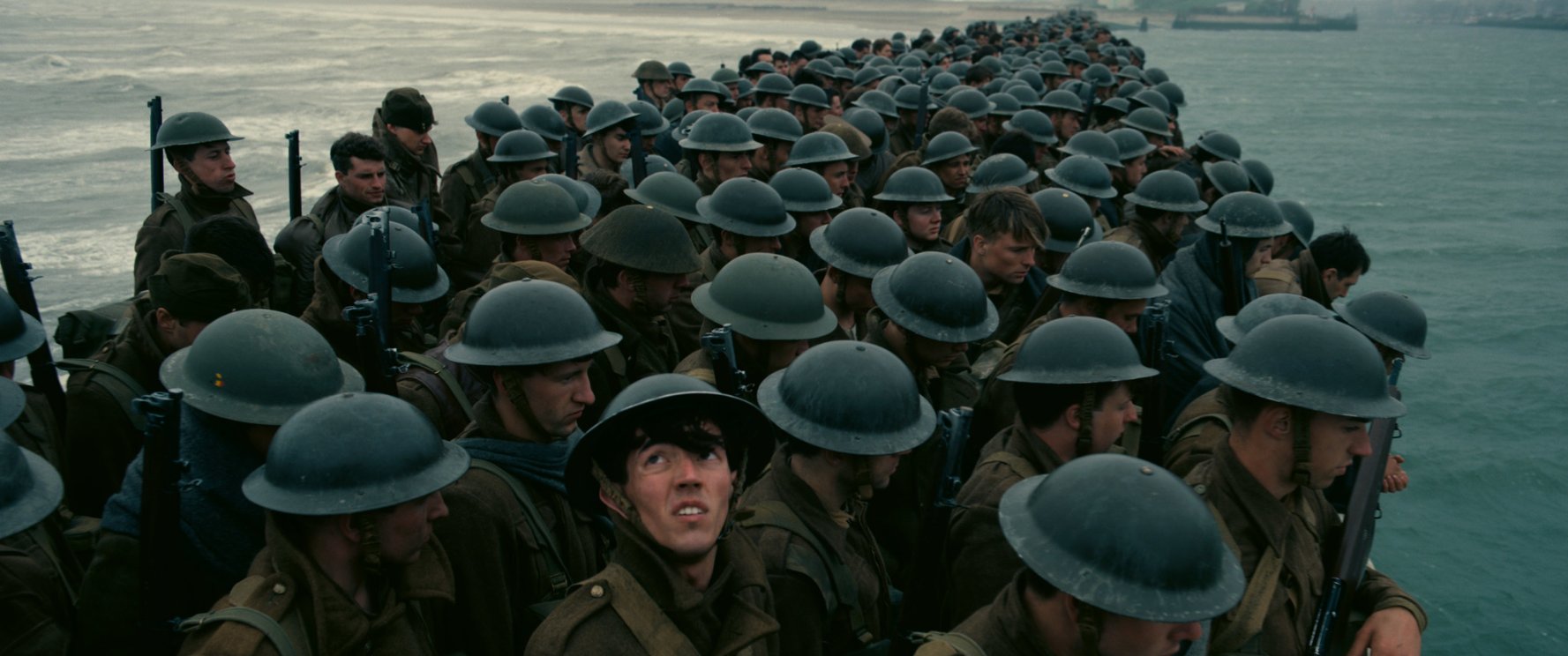Movie review: “Dunkirk”

I had some free time Saturday afternoon, so I swung by a local theater to check out the new movie by Christopher Nolan, Dunkirk.
Unlike a lot of people, I’m not a huge fan of Nolan’s work. I thought Memento and Inception were OK, but I found Interstellar not nearly as smart as it thought it was, and his Dark Knight trilogy ranging in quality from acceptable (Batman Begins) to dire (The Dark Knight Rises). But Dunkirk has gotten rave reviews, and it tells an important story that American audiences should be more familiar with than they are, so I figured I’d roll the dice and see how he’d done this time.
The short answer: he did OK, but not nearly as good as the reviews would have you believe.
Let’s start with the one thing that is undeniably good about Dunkirk: the presentation. It’s a gorgeous movie to look at, beautifully shot and rich in period detail. Scenes range from breathtaking wide shots to claustrophobic close-ups, and Nolan’s smart enough to use these techniques to advance the story — scenes below-decks in a ship are tightly framed to emphasize the smallness of the space, scenes of a group of soldiers who have gotten separated from the main army go wide to play up how alone they are. And the sound design is spectacular, making battle scenes appropriately terrifying and using some smart, subtle techniques to ramp up the tension in scenes that would otherwise be a little limp.
(Sidebar: I’m not sure if I saw it in its best presentation, as there are way too many ways to see Dunkirk, and they are all named so confusingly that keeping track of them all requires its own Vox explainer. I had wanted to see it in 70mm, but ended up seeing it in “IMAX 2D”, which I take it is a digital format instead of film. This was frustrating, but I found the IMAX 2D presentation to be plenty impressive on its own terms.)
The big problem with Dunkirk is that nothing else lives up to the quality of the presentation. The story, for instance, is told in a way that I think many viewers will find intensely confusing. It’s divided into three basic threads — “the mole,” (i.e. the beach), “the sea,” and “the air” — each with its own sets of characters and plot elements. By itself that would be bad enough, but it then goes a step further and tells the individual stories in each thread in a non-linear way, so we can’t be sure when the film cuts from one thread to another if what we’re seeing now happened before what we just saw, or after.
I get the sense that Nolan’s intent here was to set up developments early in the film that can pay off dramatically later; for instance, by having a pilot see men bailing out of a sinking boat, and then later having us spend time with a group of soldiers and see them try to escape the beach by climbing into what we realize is the same boat. The callback is supposed to add dramatic punch to the scene we saw earlier, but it only works if you can keep all these plates spinning in your head during the duration of the entire film, and that’s a lot to ask of a general audience.
More disappointingly, Dunkirk is a story without characters. Oh, there are plenty of actors running around doing things, but because there are all these separate stories going on we never spend enough time with any of them to really connect with them on an emotional level. And, not content to keep us at arm’s length from his characters in this fashion, Nolan doubles down by never having any character refer to any other by their name. All of which means we start identifying the characters in our heads just by which actor is playing them — “oh, that’s Cillian Murphy, and over there’s Mark Rylance” — which is just hot death for our suspension of disbelief.
Nolan did manage to assemble an all-star cast for Dunkirk, and they give it their all, but in many cases the screenplay doesn’t match their effort by giving them good stuff to work with. Kenneth Branagh gets lots of screen time, but all he’s given to do is stare off into the middle distance and say foreboding things. Tom Hardy plays a Spitfire pilot, but he spends 99% of his screen time with an oxygen mask strapped to his face, which both obscures the fact that we’re looking at Tom Hardy and makes it extremely difficult to make out what exactly he is saying. (Sadly, this isn’t even the first time Nolan has done this to Hardy.) Why hire actors of this quality if you’re just going to waste their talents like this? It’s baffling.
So yeah, I have a hard time understanding why Dunkirk is getting the overwhelmingly positive reception it is getting. It’s undeniably beautiful to look at and listen to, but at the level of the story and the performances it’s broken in deep, fundamental ways. Of course, the same could be said of Steven Spielberg’s Saving Private Ryan, and that quickly entered the canon of Movies Beyond Criticism too, so who knows.
Sigh.
